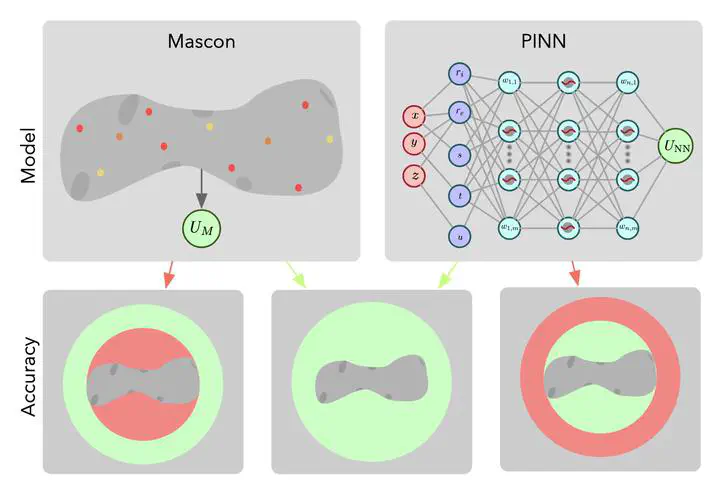
Abstract
Accurate gravity field modeling for irregular and heterogeneous density bodies, such as asteroids, presents significant challenges. The inhomogeneous gravity field plays a crucial role in spacecraft dynamics, particularly when orbiting in low-to-medium altitudes around these bodies. To achieve a precise gravity field solution, this paper explores the fusion of mascon and physics-informed neural network (PINN) gravity models. The mascon model is a classical approach that discretizes the body into a finite number of mass elements. Conversely, the PINN model uses a deep neural network to map position coordinates into a gravitational potential, and an acceleration can be evaluated via auto-differentiation of the net- work. This work trains the mascon-PINN model in two stages using a position- gravity dataset. In the first stage, only the mascon distribution is regressed and then is held constant during the subsequent stage. In the second stage, the re- gressed mascon model is combined with a weighted PINN, where only the neural network is trained to refine the gravity solution. The mascon-PINN model effec- tively merges the mascon stability at high altitudes with the high accuracy of the PINNs at low altitudes. The performance of the mascon-PINN model is evaluated using test cases for the asteroid 433 Eros, with a focus on orbital applications.